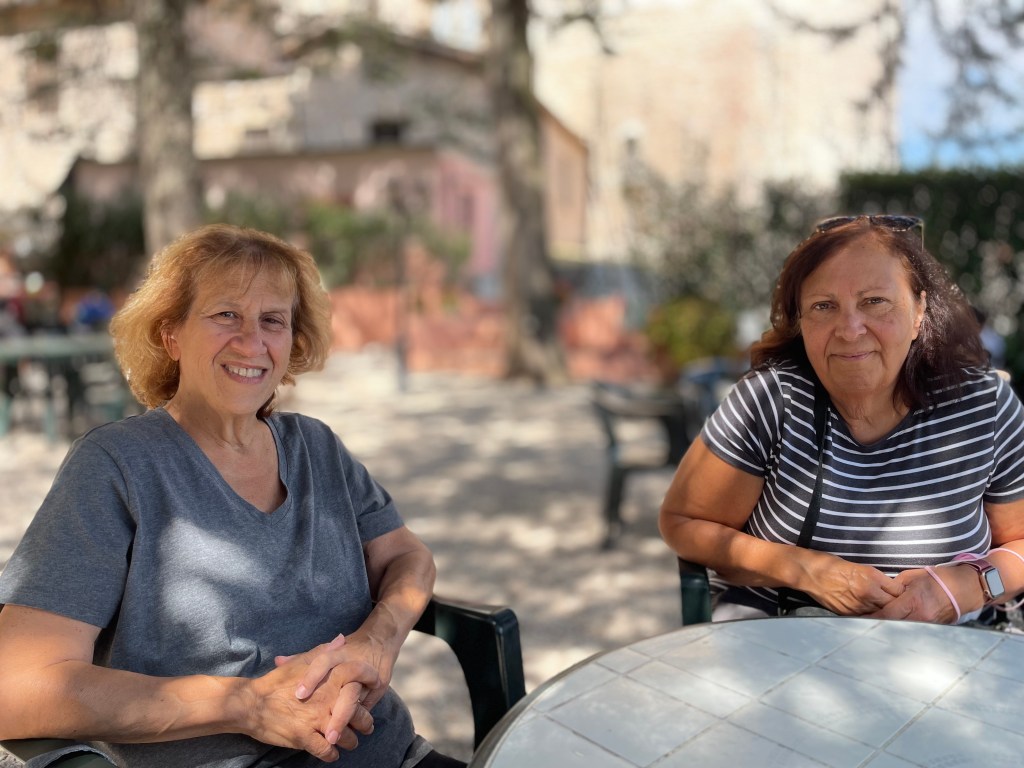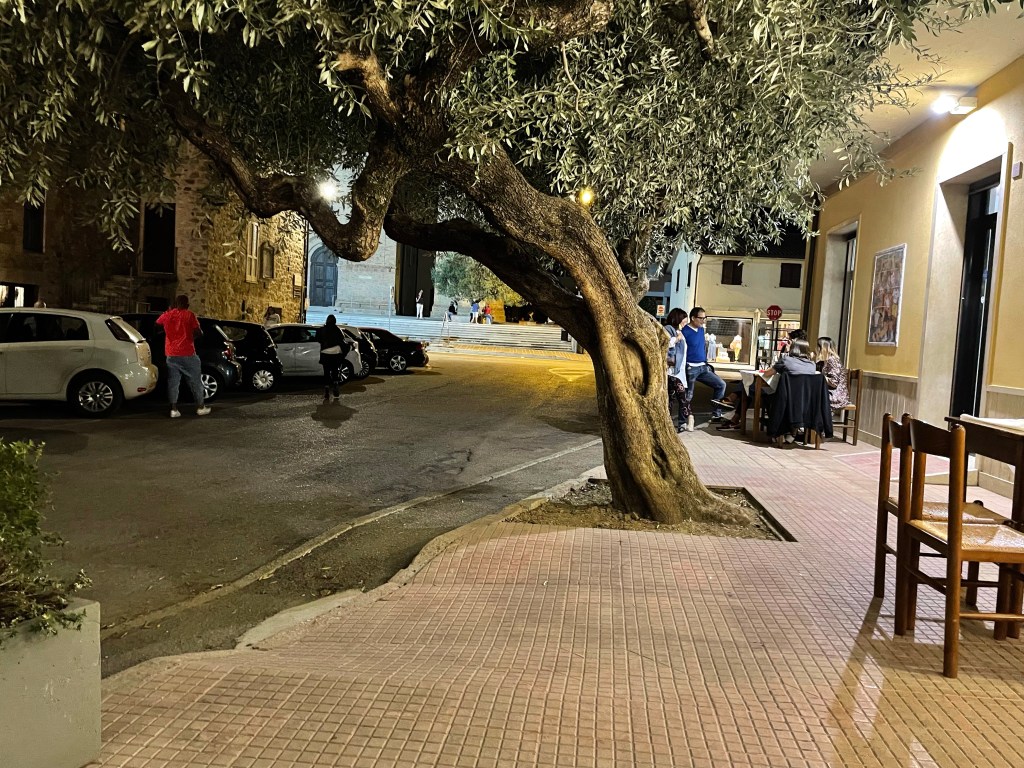It was awfully nice of the power company to warn us of upcoming work and an outage this time. Power outages here in the country are usually of the unplanned kind. The last time it went out, we got back home to a dark house, and a phone call to report the problem let me know that they were working on it and we’d be back online in a few hours. This time, for planned work, the power company posted notices up and down the road and stuffed our mailbox with one.
So we woke up early enough to use the espresso machine and to make sure our devices were charged. We sat around wondering if they really were going to cut the juice at 8:30 because it was a rainy morning. And at 8:32 the music stopped and the wifi cut out. We started to read novels but after awhile thought instead of waiting around, we’d go check out the borgos in the area that we always see from the road and say “we’ll have to check out XX one of these days.” Finally, it was one of those days.
If you’re new to this blog, a brief explanation. This region is called the mystical heart of Italy for a good reason. It’s densely wooded, hilly and mountainous, depending on where you are, and it’s dotted with castles, both adapted for modern use or abandoned, lonely testaments to the days of chivalry and bloody battles between city-states.
But first up was coffee. We had some at home, but we needed booster shots. And we had all the time in the world. We have a bunch to choose from and this morning we went to the next town, which has a sweet bar with lots of outdoor seating—perfect for a pandemic. Unlike bars (cafes in the U.S.) in touristy areas, in these local spots you don’t pay extra to hang around. Sure, you can grab a quick one standing at the bar, but in this area you tell the barista what you want and bring it to a couch or table and hang out until you need to go. First stop, then, was the Bar Dolce Vita in Pianello, behind a gas station. So what if it’s not romantically located? Good coffee, terrific outdoor seating, friendly baristas—it’s a genuine neighborhood hangout.

The first borgo on the list was Castel d’Arno (apologies for the outdate and weird-looking website). It’s a hamlet that’s part of Perugia and is up a narrow winding road. Yeah, you can describe most of the roads around here that way. We saw some workmen, and a guy supervising their work told us he rented out apartments in the hamlet. He told us to walk under an arch to an overlook and wow, even on a day full of threatening clouds and mists, the view was pretty fantastic.

Next up? Sterpetto, another tiny borgo, this time part of neighboring Assisi. Sterpetto is bigger than Castel d’Arno and looked in better shape. In general, Assisi seems to maintain its outlying hamlets better than Perugia, whose “frazioni” often seem to suffer in favor of the jewel-like historic center. Sterpetto has a working church and buildings that people actually live in. Its site is comparable in that wow factor, but Sterpetto just feels less like the 21st century has passed it by. Our gardener told me a funny story involving the borgo. A local businessman, a big man in every way, decided he’d lose weight by walking from the neighboring Pianello up the hill to Sterpetto and back. Sounds like a plan, right? Problem is, a guy works up an appetite on a long walk like that, and this man ate a couple of pizzas on the way back. Pizzas in Italy are individually sized, but still….


Speaking of the 21st Century, we next dropped into it by stopping at the megastore Leroy Merlin. It’s a French chain of big box stores that’s sort of like Lowe’s or Home Depot. Only L-M, or as The Spartan Woman pronounces it, “Lee-Roy,” is more stylish. With time to waste until pranzo (lunch), we looked at the light fixtures—I needed a new desklamp—and the tiles. We picked up some strong brackets to hang an amazing poster a friend sent us of the Spolete “Due Mondi” music festival, and took mental notes for a not-happening bathroom renovation.
Finally, lunch. We figured we still had some time to waste before the juice came on. We debated most of the morning off and on where to go. We could have gone north, back to our area to, perhaps, Il Panaro near Gubbio. Terrific torta al testo and rootsy homemade food. But there’s a strange waiter who may or may not pretend that he doesn’t understand our order and who once offended a diminutive but not too small friend of our kid’s by giving her a tiny wine glass.


We were almost in Assisi anyway. We normally avoid the place during the day, especially in summer, because it’s crawling with tourists and pilgrims and nuns and monks and souvenir vendors and….you get the idea. But on the off season and at night, it’s just a really pretty hilltown. The Spartan Woman remembered having really good stringozzi cacio e pepe at a restaurant right on the main piazza, the Taverna dei Consoli, which sounded good to me. We had equally decadent antipasti, little onion tartlets with a creamy truffle sauce for me, and a fonduta of pecorino and truffle for her. We spent a bit more than we normally would for an impromptu lunch, but it was worth it. Besides, we took the really long way back to the car, so we worked it off.
Even better, the lights came on an hour before they promised.
Image up top: the piazza outside the Basilica di San Francesco in Assisi, as seen from above and in black & white





